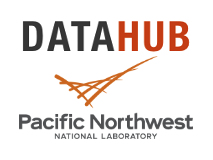Journal Article
Geoscientific Model Development, vol. 14, iss. 5, pp. 3067-3077, 2021
Authors
Sam J. Silva, Po-Lun Ma, Joseph C. Hardin, Daniel Rothenberg
Abstract
Abstract. The activation of aerosol into cloud droplets is an
important step in the formation of clouds and strongly influences the
radiative budget of the Earth. Explicitly simulating aerosol activation in
Earth system models is challenging due to the computational complexity
required to resolve the necessary chemical and physical processes and their
interactions. As such, various parameterizations have been developed to
approximate these details at reduced computational cost and accuracy. Here,
we explore how machine learning emulators can be used to bridge this gap in
computational cost and parameterization accuracy. We evaluate a set of
emulators of a detailed cloud parcel model using physically regularized
machine learning regression techniques. We find that the emulators can
reproduce the parcel model at higher accuracy than many existing
parameterizations. Furthermore, physical regularization tends to improve
emulator accuracy, most significantly when emulating very low activation
fractions. This work demonstrates the value of physical constraints in
machine learning model development and enables the implementation of
improved hybrid physical and machine learning models of aerosol activation into
next-generation Earth system models.
